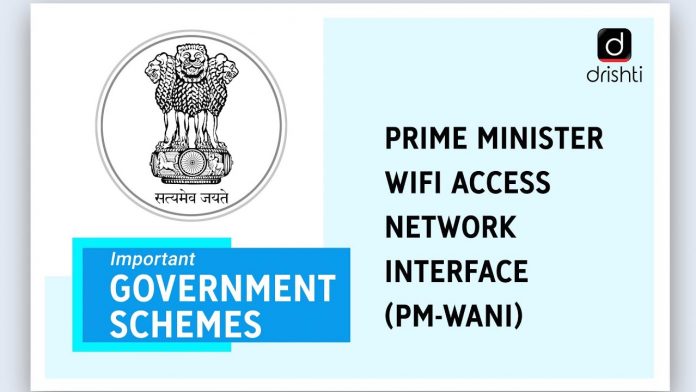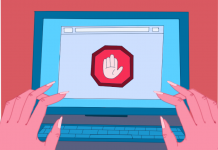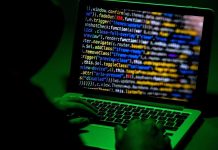This article is written by Anurag Singh from ILS Law College, Pune. This is a comprehensive article that critically analyses Prime Minister Wi-Fi Access Network Interface (PM-WANI) and the legal complications of public internet service.
Table of Contents
Public internet connectivity in India
“Our future success is directly proportional to our ability to understand, adapt and integrate new technology into our work.” Sukant Ratnakar (Author)
In a world full of competition, the optimum use of the internet is quintessential. This has been understood by most of the world including India. Since launching the internet in 1986 for research purposes, India has never looked back. It is the fastest-growing country in the internet space with around 54.3% of the population already using the internet, according to TRAI data, however, this number was far from achievable with only 21% of the total population being the users of the internet in 2014. It will be safe to say that India has seen tremendous growth in internet users as the number doubled in just 6 years. It will not be out of place to state here that the recent pandemic and the growth in the telecom industry can be credited for the growth in the usage of the internet in the country.
Digital India mission
The Indian government launched the Digital India campaign on 1st July 2015 under the guidance of Prime minister Narendra Modi. Digital India is a campaign to make the services of the government available on the internet for the convenience of the people. Moreover, it also aimed to provide better internet connectivity and empower the citizens of India with the newest technology.
The initiative digital India was a step towards connecting the rural area with the rest of the world, as these are the people who are less aware and require help. Therefore, the government aims to set up high-speed internet in rural areas in order to create a digital infrastructure all over the country and provide digital literacy to the rural parts of the country. The major objective is herein laid down below:
- To provide high-speed internet to all the gram panchayats
- To provide easy access to the common service centre in every locality.
- To make the e-governance transaction easier.
- To increase the number of internet users in the country.
- To help the business optimize under the “Make in India” initiative by moving them on the internet.
The government has also developed apps under this initiative such as Digi lockers, BHIM, E hospital, and E-Pathshala. The country hugely benefited from them during the pandemic. The government not only promotes the use of government apps but the general shift towards the internet for the benefit of the citizen.
About PM-WANI
“Historic PM-WANI (Wi-Fi Access Network Interface) scheme will revolutionize the tech world and significantly improve Wi-Fi availability across the length and breadth of India. It will further Ease of Doing Business and Ease of Living” – Shri Narendra Modi
India has one the youngest workforce in the entire world. However, most of the young population is unemployed due to the lack of opportunities. Moreover, the internet has made the world a really small place. Therefore, with access to the internet, the Indian unemployed section can generate opportunities outside India and contribute towards the economic growth of the country.
Especially during the pandemic many people lost their jobs and were forced to go online and search for work and the world of the internet welcomed them with open arms. As a result, a 22 percent jump in hiring in January 2021 compared to January 2019 was seen on a freelancing site called ‘indeed’. Therefore, the government saw this as an opportunity and introduced PM-WANI (Wi-Fi Access Network Interface) in December 2020. It will be safe to say that this is an extended part of the Digital India campaign.
Through this scheme, the government aims to provide free internet across the country for its citizens. Let the free in the sentence not confuse you. The ‘free internet’ here stands for the free access of the internet and not its usage, you still have to pay for the amount of internet that you use, just the access is made free by setting up hotspots in various parts of the city. This initiative was started so that people can access high-speed internet wherever and whenever they want.
PM-WANI infrastructure
The government has tried to keep everything really simple under the scheme. Therefore, the government has gone ahead with only four organizations under the PM-WANI scheme, they are:
Public Data Offices (PDO): Do not get confused with the word ‘offices’ in the name, PDOs is nothing but a place where the setup of WiFi will be installed and managed. They are responsible for providing the customer with the WiFi Hotspot. However, the government is not planning to set up any new offices under the scheme, they have kept the floor open for all the shops, malls, and restaurants, etc. Moreover, the government is also planning to keep no paperwork or registration fees to create more hotspots. Furthermore, only after 7 days of registration, the WiFi will be set up and that particular shop will be known as a PDO thereon.
Public Data Office Aggregators (PDOA): The primary role of PDOA is facilitating PDOs in providing services to the end consumer. Moreover, they will look after the authorization of PDOs and look after their accounting as well. It will be safe to say that PDOAs are the authority that will overlook the functioning of the PDOs.
App provider: In order to use the services under the scheme one has to be aware of where the PDOs are and an app from which they can access the internet. This is where the role of app developers comes in, they are responsible to develop an app to register users and ‘discover’ and display PM-WANI.
Central Agency: The role of the central agency is to maintain the data regarding PDOs, PDOAs, and App providers in a digitally signed XML format. Moreover, they will have to overlook the functioning of all the Authorities under the scheme.
Public internet – how does it affect the privacy of an individual
The International Association of Privacy Professionals (IAPP) defines information privacy as “the right to have some control over how your personal information is collected and used”. Moreover, the right to privacy refers to a legal framework that provides individuals with a legal right to protect their data’s privacy.
If you are not charged for the service, then you are the product. This is true when we look at the giants on the internet like Google, Facebook, Amazon, etc. They don’t charge their customers for using their website or app. Instead, they store the information and then show ads based on the information they have. However, these are private companies and do have to deal with the welfare of the people in the country.
The question that we need to worry about is what the government will do with the data that the government collects and how it will be managed. Interestingly, the government has ensured that all the data that they store will be safe and secure. However, there is no proper legislation in order to protect such data. There are provisions to regulate the use of data by a corporate body and if they fail to protect it and the data leaked contains sensitive information of the customer then the corporate body has to face legal consequences under Information Technology Act, 2000.
Moreover, the Supreme Court in the case of Puttaswamy v. Union of India (2018) has declared that the right to privacy is a fundamental right protected under Article 21 of the Indian Constitution. A nine-judge bench in the instant case explicitly overruled previous judgments of the Supreme Court in Kharak Singh vs State of UP & Ors (1962) and M.P Sharma vs Union of India (1954), which held that there is no fundamental right to privacy under the Indian Constitution. After this judgment, the right to privacy had a clear stand in the constitution and under no circumstances can be violated.
Furthermore, the security of data was already a big concern in today’s world as everything is just a click away and with the recent pandemic the dependency on the internet has increased even more. It will be safe to say that with the infrastructure that the government is planning, there will be loads of data with the PDO’s and PDOA’s. Therefore, if someone hacks into the system, they can have unlimited access to the registered accounts of every individual present under that portal, along with being violative of the individual’s fundamental rights, which is a threat to national security as well. Therefore, by setting up this public wifi in various parts of the country, the government has a greater responsibility that the data is protected at all costs.
Countries that have a legal structure regarding public Wi-Fi
India is not the first country to come up with the concept of free internet for its citizens, many countries have done it before and declared the internet as a basic human right. We are going to talk about a few countries, they are:
Estonia
In 2000, the parliament launched a massive program to expand internet access to the countryside. The internet, the government argues, is essential for life in the 21st century. Therefore they added Article 5 in their Constitution which states that the set of telecommunications services specified in subsection (1) of this Section comprises internet service which is universally available to all subscribers regardless of their geographical location, at a uniform price.’ The 2007 interview with Estonian former prime minister Mart Laar, on Spiegel Online, describes how all four corners of the country became connected through a robust infrastructure.
Greece
Greece amended its Constitution with the introduction of Article 5A among other provisions, which states that “all persons have the right to participate in the Information Society. Facilitation of access to electronically transmitted information, as well as of the production, exchange, and diffusion thereof, constitutes an obligation of the State, always in observance of the guarantees of Articles 9, 9A, and 19.”
Finland
Finland followed suit last year when it declared broadband access a basic right. The right was proclaimed via an amendment in the Communications Market Act,2003 which stated that universal service also included a functional internet connection. This meant that from the beginning of July 2010, the telecom operators that are defined as universal service providers were able to provide every permanent residence and business office with access to a reasonably priced and high-quality connection with a downstream rate of at least 1 Mbit/s.
There are many countries like France, Spain, Costa Rica, and the European Union that have made the internet a basic human, and other countries might not have gone to such extreme measures but have a robust mechanism to provide internet to their citizens via Public WiFi.
Advantages of a public Wi-Fi plan
- Better connectivity of internet in rural as well as urban areas
- An additional source of income for the shops and malls as they will be recognized as PDO.
- With better connectivity, a boom can be seen in the business as they will be able to connect a lot more people.
- Economically, socially and culturally this will transform how Indians communicate, educate, work, and relate.
- Cheap internet will be available, as the cost of the internet will be decided by the market forces and the government will not intervene.
- Under this scheme, the economy of the country will surely rise, as it can lead to a 10% rise in the internet penetration which in turn can lead to a 1.4% increase in GDP.
- The discovery of the internet for rural business will help India become Atma Nirbhar, which is another initiative where the government promotes small business.
Challenges faced by PM-WANI
- Privacy is the biggest challenge that the government has to deal with under the scheme because there is no law in place to protect public data.
- Moreover, WiFi has lost its relevance due to the cheap data being available to the people by the telecom industry.
- The speed of the internet is also a major issue, if the internet is very cheap and people are drawn towards it as the government claims it to be, then they either will have to set up more PDOs or increase the bandwidth.
- The government is planning to set up only 1 crore PDOs all over India, this number is very less considering the Indian population. Therefore people might find it difficult to find a PDO in every area.
- One of the objectives is to increase the penetration in rural areas. However, if people are not educated on how to use the internet to their advantage it will be of no use to them. Therefore the government should educate the rural areas about the wide scope of the internet.
Conclusion
With the internet penetration increasing with each passing year, providing people with free access to the internet is a must for personal growth and the growth of the country. However, the government should keep in mind the privacy concerns that come with and address the same because if the issues regarding privacy are not addressed then the people will not have faith in this scheme by the government and people will quickly switch to their regular broadband connection, they might not be the cheapest option available but they surely will be the reasonably priced and a more comfortable one as well.
References
- https://dot.gov.in/dataservices/prime-minister-wi-fi-access-network-interface-pm-wani-framework-and-guidelines
- https://www.insightsonindia.com/2020/12/10/pm-wani/
- https://www.vitalwifi.com/legal/
- https://arstechnica.com/information-technology/2016/08/public-wi-fi-forget-the-scare-stories-read-this/
- https://www.youtube.com/watch?v=r6TOYaJdcQE&t=293s
Students of Lawsikho courses regularly produce writing assignments and work on practical exercises as a part of their coursework and develop themselves in real-life practical skills.
LawSikho has created a telegram group for exchanging legal knowledge, referrals, and various opportunities. You can click on this link and join:
https://t.me/joinchat/J_0YrBa4IBSHdpuTfQO_sA
Follow us on Instagram and subscribe to our YouTube channel for more amazing legal content.
 Serato DJ Crack 2025Serato DJ PRO Crack
Serato DJ Crack 2025Serato DJ PRO Crack










 Allow notifications
Allow notifications



